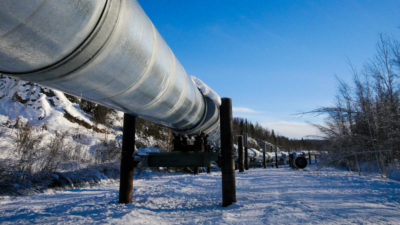Last week, shares of Suncor Energy Inc. (TSX:SU)(NYSE:SU) sold off by more than 5% after the company announced its 2016 spending plan.
There were two major reasons why investors voted against that plan by selling off shares. First, it represented upwards of $1 billion in additional spending over the 2015 plan. And second, despite that additional spending, Suncor’s production was expected to decline year over year. Given that higher costs and lower production typically yield weaker financial results, that was enough to make some investors to walk away from the company.
That mindset, however, was the wrong one because investors missed two even more important takeaways from Suncor’s 2016 capex plan. First, it includes a substantial amount of spending that is geared to drive future improvements in both costs and reliability. And second, the company is investing a substantial amount of money into growth. However, that growth won’t be delivered immediately, which is actually a very good outcome given the fact that the oil market remains deeply oversupplied.
Building a better oil company
Suncor expects to spend 45% of its upstream capex budget on what it called “significant planned maintenance activities” at several of its facilities. This is spending that will enable the company to achieve “further reliability improvements” across its operations, and it will help the company build on its cost-reduction momentum by driving its cost per barrel even lower.
Lowering that cost is really critical for the company, especially in light of weak oil prices. It continues to make a lot of progress and expects next year’s oil sands operating costs to be $27-30 per barrel, which is below this year’s range of $28-31 per barrel and 25% below the peak in 2011.
Suncor’s costs are already well below many of its industry peers, with Syncrude, for example, seeing costs in the $38-45 per barrel range. That’s one reason why Suncor wants to acquire Canadian Oil Sands Limited. Suncor believes that by gaining greater control of Syncrude, it can be instrumental in reducing the costs of the key oil sands asset.
Delivering growth when it matters
The other major portion of Suncor’s spending is on growth projects. However, investors only see the fact that the company expects its production to decline next year with its output ranging between 525,000-565,000 barrels per day, which is below its 540,000-580,000 barrels per day guidance for 2015.
That said, this is not a bad outcome because the oil market remains deeply oversupplied, so growing production in 2016 will only keep a lid on oil prices.
Instead, Suncor’s growth spending is primarily earmarked for Fort Hills and Hebron, which aren’t expected to deliver first oil until 2017. Ideally, both projects will be ramping up production into a much more balanced oil market, which is what’s needed for meaningfully higher oil prices. As such, this production will create more value for the company than production added in early 2016 when prices will likely still be weak.
Investor takeaway
Investors reacted negatively to the short-term outlook, which will see Suncor spend more money next year without delivering any near-term production growth. However, that was the wrong reaction because the company is actually acting very prudently. It is investing heavily to improve its core business while also investing to deliver growth when the oil market will actually need more oil.








